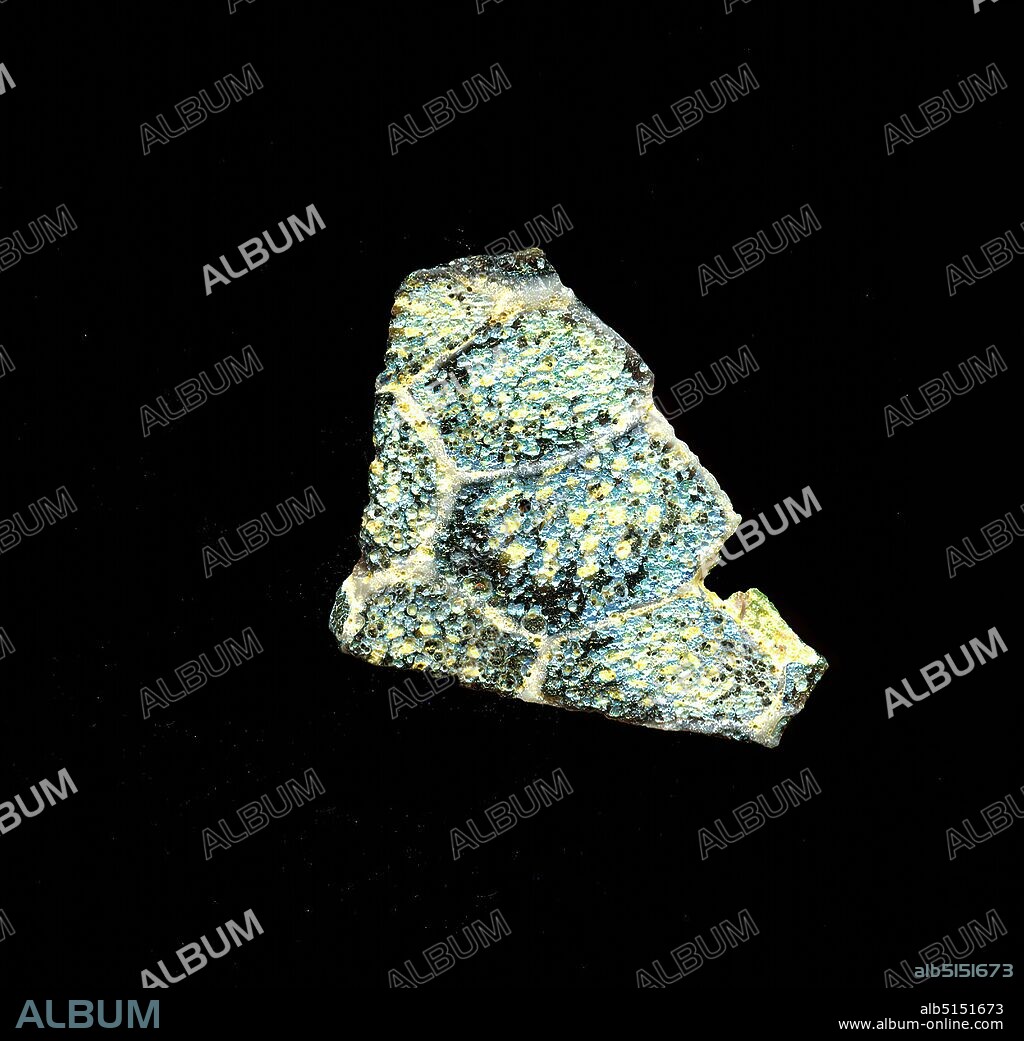alb5151673
Fragment of a vessel, glass, millefiori technique, Total: Height: 2.90 cm; Width: 2.10 cm, container, storage, kitchen work, floral ornaments, Early Imperial Period, A slight curvature of the heavily weathered glass fragment allows the assignment to a vessel, possibly a bowl. On a presumably violet background, a grid can be seen, reminiscent of honeycombs, in which circularly arranged bright dots can be seen. For the production, different colored glasses were formed into tubes and rods. These were pressed together and heated, resulting in a long rod. The glass, now cut into slices, had different amorphous or floral patterns. Several of these plates were then folded together, heated again and pressed into a vessel form. Due to the complex manufacturing process and its fragility, glass was considered one of the luxury articles of antiquity.

|
Add to another lightbox |
|
Add to another lightbox |



Buy this image.
Select the use:

Caption:
Fragment of a vessel, glass, millefiori technique, Total: Height: 2.90 cm; Width: 2.10 cm, container, storage, kitchen work, floral ornaments, Early Imperial Period, A slight curvature of the heavily weathered glass fragment allows the assignment to a vessel, possibly a bowl. On a presumably violet background, a grid can be seen, reminiscent of honeycombs, in which circularly arranged bright dots can be seen. For the production, different colored glasses were formed into tubes and rods. These were pressed together and heated, resulting in a long rod. The glass, now cut into slices, had different amorphous or floral patterns. Several of these plates were then folded together, heated again and pressed into a vessel form. Due to the complex manufacturing process and its fragility, glass was considered one of the luxury articles of antiquity.
Credit:
Album / quintlox
Releases:
Model: No - Property: No
Rights questions?
Rights questions?
Image size:
4320 x 4169 px | 51.5 MB
Print size:
36.6 x 35.3 cm | 14.4 x 13.9 in (300 dpi)
Keywords:
ANCIENT WORLD • ANTIGUEDAD • ANTIQUITIES • ANTIQUITY • ASSIGNMENT • BOWL • CIRCULARLY ARRANGED BRIGHT DOTS • COMPLEX MANUFACTURING PROCESS • CONSIDERED • CONTAINER • DIFFERENT AMORPHOUS • DIFFERENT COLORED GLASSES • DUE • EARLY IMPERIAL PERIOD • FABRICATION • FEEBLENESS • FLORAL ORNAMENTS • FLORAL PATTERNS • FOLDED TOGETHER • FORMED • FRAGILITY • FRAGMENT • GLASS • GRID • HEATED AGAIN • HEATED • HEAVILY WEATHERED GLASS FRAGMENT ALLOWS • HONEYCOMBS • KITCHEN WORK • LONG ROD • LUXURY ARTICLES • MANUFACTURE • MANUFACTURING • MILLEFIORI TECHNIQUE • NOW CUT • PLATES • PRESSED TOGETHER • PRESSED • PRESUMABLY VIOLET BACKGROUND • PRODUCING • PRODUCTION • PRODUCTIONS • REMINISCENT • RESULTING • RODS • SEVERAL • SLICES • SLIGHT CURVATURE • STORAGE • TUBES • VESSEL FORM • VESSEL • WEAKNESS
 Pinterest
Pinterest Twitter
Twitter Facebook
Facebook Copy link
Copy link Email
Email
